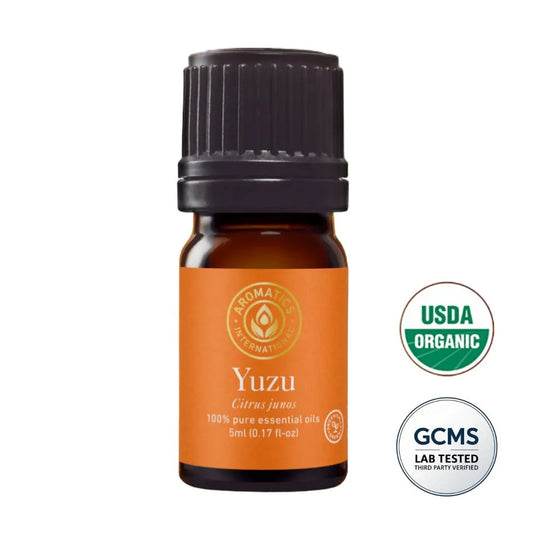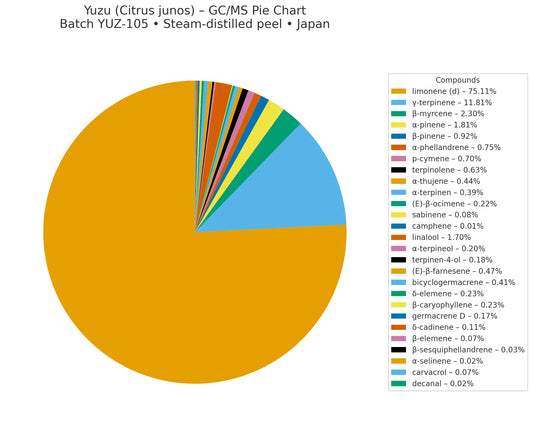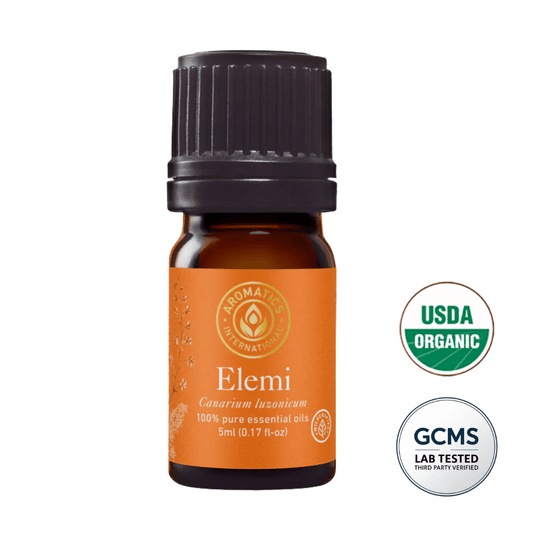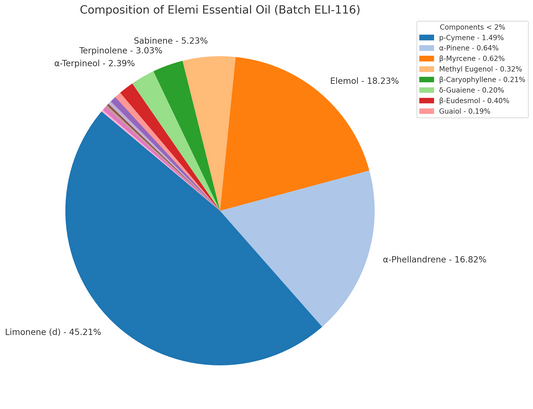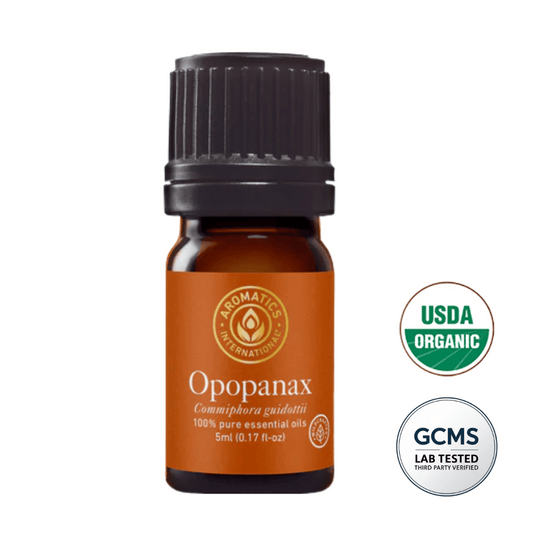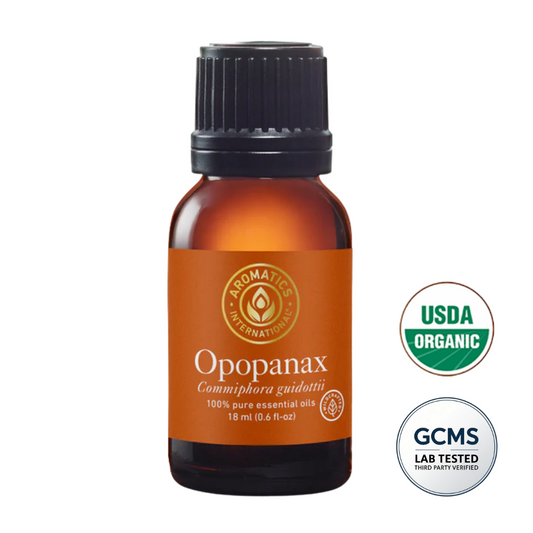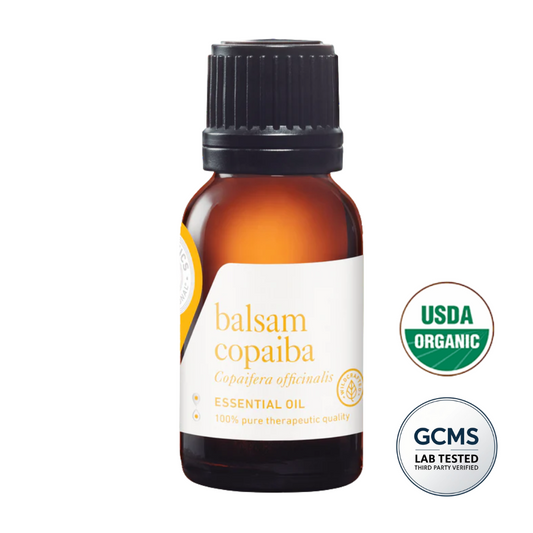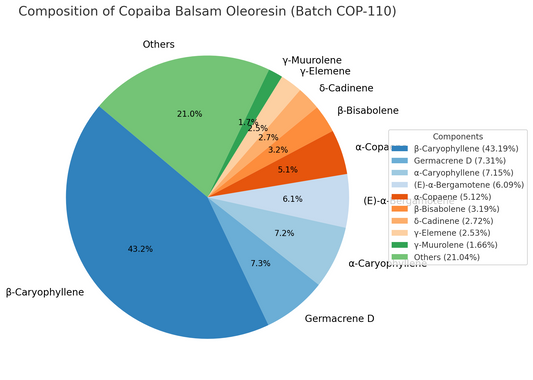Fundamental Chemistry of Essential Oils and Volatile Organic Compounds - Methods of Analysis and Authentication
Share
1. Introduction
Essential oils and natural volatile substances are among the most successful industrial commodities – used as flavorings in food, in balms and shampoos as fragrances and skin and hair regenerating ingredients, in perfumes, candles, soaps, disinfectants, and in conventional and clinical aromatherapy. Such widespread use has made their production highly profitable, which in turn has created the temptation to seek "shortcuts": cheaper chemical synthesis, production in bioreactors, or the use of adulterants and counterfeits.
Consumers most often expect their essential oils to be derived from plants, using traditional distillation methods. Some customers accept synthetic oils, but only if they are produced in bioreactors using genetically modified yeast or plant cell cultures, rather than using classic chemical synthesis based on toxic reagents.
Concerns about the authenticity of oils are justified. It's common for vegetable oils (e.g., sunflower, rapeseed, mustard) to be "enhanced" with a few drops of fragrance and sold as "essential oils." Sometimes, aromatic plants are extracted in fatty oils and offered as "essential oils," a misleading but tempting marketing tactic. Fortunately, more and more consumers are distinguishing between an essential oil and an extract, absolute, concrete, or perfume obtained by enfleurage.
How is essential oil made?
From a chemical perspective, an essential oil is a mixture of volatile organic compounds obtained through distillation (hydrodistillation, steam distillation, and less commonly, microwave-assisted distillation). Therefore, it is untrue that a plant contains a "ready-made essential oil." The plant contains precursors and compounds that create the oil during the distillation process.
Exception : According to international standards, oils mechanically extracted from the pericarp of citrus fruits (e.g., bergamot) may be called essential oils. Other pressed oils should be referred to as "fixed oils" or "expressed oils."
The difference between oils and extracts
Essential oils comprise a narrow set of volatile molecules, while extracts also contain non-volatile components, such as flavonoids and alkaloids. In cosmetic and therapeutic practice, each of these sources has its own significance. For example:
- Pressed bergamot oil contains photosensitizing furanocoumarins (bergapten), which may cause sunburn.
Distilled bergamot oil is free of these compounds, so it is safer to expose to light.
In turn, extracts containing non-volatile components often exhibit antibacterial synergism that cannot be achieved using distilled oil alone.
Artifacts in the distillation process
Distillation not only releases but also transforms compounds. Examples:
- geijerene is formed from pregeijerene,
- elemol from hedicaryol,
- eudesmole from cryptomeridiol,
- spathulenol from bicyclogermacrene.
This means that some of the oil components do not occur in this form in the plant raw material - they are products of thermal conversions.
Etymology of the concept
The term "essential oil" comes from the Latin quinta essentia , meaning "fifth element." It was considered the "spirit of the plant," captured through distillation. In reality, however, this process is based not on the classic boiling of the ingredients, but on the increase in their vapor pressure under the influence of steam and subsequent condensation.
Why is the chemistry of oils so complex?
The field of essential oils is researched by people with a wide range of expertise: aromatherapists, pharmacists, organic chemists, analysts, and enthusiasts. Therefore, there is a need for studies that present the basics of organic chemistry in the context of oils in a way that is understandable but not overly simplistic.
2. Chemical classification of essential oil components
The components of essential oils are chemically classified according to four criteria:
- Biosynthetic origin - from what metabolic pathway do they arise?
- Size (number of carbon atoms) - e.g. monoterpenes (C10), sesquiterpenes (C15).
- Carbon skeleton (so-called parent skeleton) - e.g. menthane, limonane, caryophyllene.
- The nature of oxidation - the presence of atoms more electronegative than carbon (O, N, S), as well as the presence/absence of double bonds.
Four major biosynthetic pathways create three main groups of volatile compounds:
- terpenes (mevalonic acid pathway - MVA and MEP pathway),
- phenylpropanoids (shikimic acid pathway),
- isothiocyanates (glucosinolate pathway).
2.1. Terpene biosynthesis
The basic isoprene units (isopentenyl diphosphate, dimethylallyl diphosphate) are formed in two ways:
- The mevalonic acid (MVA) pathway , active in all eukaryotes, occurs in the cytoplasm and is primarily responsible for the synthesis of sesquiterpenes, sterols, and triterpenes.
- The MEP (2-C-methyl-D-erythritol-4-phosphate) pathway occurs in higher plants and algae, occurring in plastids. It leads to the formation of monoterpenes, diterpenes, and tetraterpenes.
Both pathways produce five-carbon units (C5), from which larger molecules are created in the condensation process: monoterpenes (C10), sesquiterpenes (C15), diterpenes (C20).
Biologically interesting: the expression of these pathways can vary depending on environmental factors. In some species, a shift from a sesquiterpene profile (MVA) to a monoterpene profile (MEP) is observed, leading to chemotype variation within a single plant genus.
2.2. Terpenes and meroterpenes
- Monoterpenes - C10, e.g. limonene, α-pinene.
- Sesquiterpenes - C15, e.g. β-caryophyllene.
- Diterpenes - C20, less commonly found in oils (e.g. abietane diterpenes from Croton gratissimus ).
These molecules can undergo modifications:
- esterification (e.g. linalyl acetate),
- formation of methyl esters,
- chain shortening (norterpenes).
Meroterpenes – are formed from the conjugation of terpenes with phenylpropanoids or phloroglucinols. Example: bakuchiol from the genus Psoralea .
2.3. Biosynthesis of phenylpropanoids
They are produced in the shikimic acid pathway in plastids. The starting amino acids are phenylalanine and tyrosine. Subsequent enzymatic reactions (including lyases, hydroxylases, and transferases) lead to the formation of compounds with a characteristic aromatic ring and propene chain .
Phenylpropanoids are extremely diverse - they include alcohols (eugenol), aldehydes (cinnamal), phenols, methoxy- and methylenedioxy-derivatives (anethole, safrole).
2.4. Phloroglucinols and phenylpropanoids
Phloroglucinols are composed of an aromatic ring with three hydroxyl groups in alternating positions. They can occur, for example, in the Geijer type (xanthoxylin compound).
Phenylpropanoids are much more common - they are responsible for, among other things, the taste of anise (anethole), the psychoactive effect of nutmeg (elemicin), and in the case of safrole - for documented hepatotoxicity in animals.
2.5. Carbon skeleton and oxidation state
Terpenes can occur as:
- simple hydrocarbons (limonene),
- alcohols (menthol),
- aldehydes (citral),
- ketones (menthone),
- oxides (1,8-cineole),
- esters, acids, lactones, coumarins.
Naming convention : combine information - e.g. "monoterpenol" (alcohol), "monoterpenone" (ketone).
Example: menthol and menthone are derivatives of the same skeleton (menthane), differing in their oxidation state.
2.6. Rare and Unusual Ingredients
Some regions of the world (Australia, South Africa) are rich in plants that produce unusual volatile compounds, e.g.:
- rare organosulfur esters (e.g. nudaic ester),
- phloroglucinols (e.g. xanthoxylin),
- furanocoumarins with strong phototoxic properties (bergapten, xanthotoxin),
- isothiocyanates characteristic of Brassicaceae plants.
2.7. Color and viscosity of oils
- Most oils are colorless or light yellow.
- The blue color comes from chamazulene (e.g. blue chamomile, Artemisia arborescens ).
- The green shades are due to the presence of pregeijerene and geijerene.
- Intense yellow or orange colors result from the presence of conjugated double bonds (e.g. guaiazulene, chamazulene, matricine).
Some oils crystallize in the bottle during storage (e.g., those rich in guaiol or phloroglucinols). These substances can sometimes make up over 50% of the oil's volume in crystals.
3. Stereochemistry and Isomerism in Essential Oils
Before the era of modern chromatographic techniques, chemists often had difficulty separating mixtures of isomers or mistakenly treated mixtures as single compounds.
Isomers are molecules with the same molecular formula but different structures. The simple monoterpene C₁₀H₁₆ can exist in thousands of variants.
Types of isomers:
- Constitutional (structural) isomers - differ in the arrangement of atomic bonds (e.g. α- and β-pinene - difference in the position of the double bond).
- Regioisomers - a functional group attached at different places on the aromatic ring.
- Stereoisomers – have identical structure and bond positions, but differ in their spatial arrangement. They are divided into:
- diastereomers - e.g. cis- and trans-isomers,
- enantiomers - mirror images, not decomposable into each other (like the left and right hands).
3.1. Diastereomers
An example is citral - a mixture of two diastereomers:
- geranial (α-citral, trans),
- neral (β-citral, cis).
Citral was initially thought to be a single aldehyde, but it was not until the 1960s that its two forms were separated and confirmed.
Diastereomers differ in the arrangement of groups around the double bonds. The following symbols are used:
- E (trans) - groups on opposite sides,
- Z (cis) - groups on the same side.
3.2. Enantiomers (chirality)
Chiral molecules have a stereogenic center (a carbon atom with four different substituents). They form pairs of enantiomers—mirror images of each other.
- Enantiomers differ in the rotation of polarized light:
- (–) or l- - turn to the left (levorotate),
- (+) or d- - turn to the right (clockwise rotation).
Important: the d-/l- (rotation) designations are not the same as D-/L- (Fischer convention for sugars and amino acids).
Example:
- (+)-carvone - the smell of cumin,
- (–)-carvone - the smell of spearmint.
3.3. Basics of chirality (enantiomers)
- Enantiomers have an identical molecular formula and structure, differing only in their spatial arrangement.
- The R and S designations indicate the absolute configuration (according to the Cahn–Ingold–Prelog rules).
- Example: S-(–)-α-pinene and S-(+)-carvone – both have the S configuration, but rotate light in opposite directions.
Biological significance of enantiomers:
- Olfactory receptors and enzymes "distinguish" mirror forms.
- The human nose can easily distinguish enantiomers - this was demonstrated in 1971 in a study using carvone.
3.4. Epimers and other stereoisomer variants
- Epimers - diastereomers that differ in configuration only at one chiral center.
- Example: menthone and isomenthone.
- α- and β-isomers - e.g. α- and β-thujone.
- Cis/trans isomers - determine the position of groups in the ring system.
3.5. The importance of enantiomeric purity
In nature, oils have characteristic enantiomer ratios that are repeatable within a species.
- If a racemic mixture (50/50) appears in the analysis, it most often indicates synthetic origin .
- The production of enantiomerically pure synthetics is expensive - therefore counterfeiters use racemates, which are easily detected by testing on chiral columns.
4. Chemical analysis of essential oils
The development of modern analytical technologies has significantly improved the accuracy of identifying essential oil components.
Before the 1950s, chemists had to painstakingly determine the structures of volatile compounds, which resulted in numerous inconsistencies in the literature. Today, for example, it is known that (-)-ngaion and (+)-ipomeamaron are actually enantiomers, not two distinct compounds.
4.1. Gas Chromatography (GC)
Principle of operation:
- a small amount of oil is introduced into the chromatographic column,
- carrier gas (helium, nitrogen) pushes the mixture,
- components are separated depending on their physicochemical properties,
- each component leaves the column at a different time (so-called retention time) and reaches the detector.
The column is placed in an oven which gradually heats the mixture - usually from 40-60 °C up to 280-300 °C, at a rate of 3-5 °C/min.
Important: despite the name "gas chromatography" - compounds do not pass through the column in a gaseous state, but in the form of vapor and liquid adsorbed on the column walls.
Example:
- spathulenol has a boiling point of ~297 °C, but in the GC column it elutes already at 150–200 °C,
- Limonene (bp 176 °C) elutes at 105–115 °C.
This means that the separation depends more on the interaction with the stationary phase and pressure than on the boiling point.
4.2. Stationary phases of GC columns
The columns are thin capillaries (approx. 30 m long), filled with a stationary phase:
- non-polar - e.g. DB-1, HP-5 (polymethylsiloxane, phenyldimethylsiloxane),
- polar - e.g. Carbowax, DB-Wax (polyethylene glycol).
The type of column influences retention time and the shape of the separation. For reproducible analyses, the column used should always be specified.
4.3. GC-MS Identification and Spectral Library (NIST)
GC-MS combines chromatography with a mass detector.
- the particles are hit by electrons (70 eV),
- are fragmenting,
- they create a characteristic "fingerprint" – the mass spectrum,
- this spectrum is compared with the NIST library.
Practical note:
- GC-MS allows the distinction of diastereomers ,
- but does not distinguish enantiomers unless a chiral column is used.
- Therefore, reporting, for example, "(+)-limonene" based on NIST is incorrect. Simply write "limonene."
4.4. How to Use NIST Library Suggestions
NIST provides potential compound names along with % confidence of match.
- A result of >90% can be considered reliable,
- 80-90% can also be acceptable (e.g. with low signal intensity or poor calibration).
But - identification must be confirmed by:
- Calculation of the retention index (AI, Kovatsa).
- Comparison with literature values (e.g. Adams 2007).
Rule of thumb: NIST result + AI match ±10 units = confirmed identification.
4.5. Other chromatographic techniques
- GC-FID (flame ionization detection) - more quantitatively accurate than GC-MS.
- GC-olfactometry - the detector is the human nose; used in perfumery.
- Two-dimensional gas chromatography (GC×GC) - combines two columns of different polarities, increases resolution.
4.6. Naming errors
Common problems:
- rewriting names from NIST along with enantiomer designations (e.g. (+)-α-pinene) without justification,
- using long IUPAC systematic names instead of common names,
- failure to provide retention rates - which makes verification impossible.
Good practice:
- provide common names (α-pinene, linalool),
- supplement with AI (retention index),
- avoid unconfirmed stereochemical designations.
5. Authentication of essential oils
The adulteration and counterfeiting of essential oils is an unfair, unethical, and potentially dangerous practice for consumers. Consumer awareness is crucial – the more people recognize the signs of counterfeiting, the less demand there will be for adulterated products, and therefore less incentive to introduce them to the market.
5.1. Analytical methods used in authentication
The most common practice is basic chemical composition analysis (GC-MS profile). Unfortunately, counterfeiters are learning increasingly sophisticated methods and are able to "recreate" an oil's profile so that it appears correct at first glance.
Enantiomeric analysis (GC on chiral columns)
- Natural oils have characteristic enantiomer ratios that are repeatable within a species.
- Counterfeits are revealed when the enantiomeric profile is disturbed (e.g. presence of a racemic mixture).
- Example:
- Boswellia carteri – almost racemic α-pinene,
- Boswellia sacra – α-pinene almost exclusively (+).
- If the oil has proportions that are unusual for a given species, you may suspect the addition of a synthetic ingredient.
Isotope analysis (IRMS - Isotope Ratio Mass Spectrometry)
- It uses carbon isotope ratios (¹³C/¹²C).
- Petrochemical synthetics have an underestimated ¹³C content (a result of long-term radioactive decay).
- The analysis also allows for the detection of admixtures of cheaper natural oils:
- C3 plants (e.g. Citrus limon ) accumulate less ¹³C than C4 plants (e.g. Cymbopogon citratus ),
- If lemon oil is flavored with citral from lemongrass, the isotopic ratios will reveal this.
Other spectroscopic methods
- infrared spectroscopy (IR),
- NMR spectroscopy,
- UV fluorescence.
Used as a supplement, but not always sufficient to detect advanced forgeries.
5.2. Simple (first-line) authentication methods
Not all forgeries are sophisticated - many can be detected with basic testing.
5.2.1. UV spectrophotometry
- Aromatic compounds (phenylpropanoids, coumarins, flavonoids) have characteristic UV bands.
- Example: eugenol absorbs at 280.9 nm, thymol at 275 nm.
- If an oil declared as “pure” shows the presence of additional UV chromophores, this may indicate the addition of a carrier oil or extract.
5.2.2. Evaporation Test
- A drop of the product to be tested is placed on the paper and heated (e.g. with a hairdryer).
- Pure essential oil - will evaporate completely.
- An adulterated product (e.g. with added vegetable oil) will leave a greasy stain.*But beware, there are exceptions!
- Note: ISO mechanically pressed citrus oils are considered authentic even though they contain components that do not fully evaporate.
* Sandalwood oil (Santalum album, S. spicatum, S. austrocaledonicum) :
- it is a natural oil, but rich in heavy sesquiterpenols (α-santalol, β-santalol, epi-β-santalol),
- has high viscosity and lower volatility than, for example, citrus or lavender.
Effect?
- On paper it will not evaporate as quickly and completely as a light fraction oil (e.g. citrus).
- It may leave a slight trace, although this does not mean it is adulterated .
5.2.3. Thin Layer Chromatography (TLC)
- In a simple solvent system (e.g., 10% ethyl acetate in hexane), the oil components migrate up the plate.
- If the sample contains compounds "stuck" at the starting line - they are too polar to belong to the essential oil → most likely an admixture of the extract.
- TLC can be used to detect common adulterants, e.g. the presence of coumarins in "lavender oil" (often mixed with grapefruit oil).
5.3. Spoofing Tactics
Most common methods:
- dilution with vegetable oil,
- adding synthetic terpenes (e.g. linalool, limonene),
- mixing with cheaper oils of similar composition,
- "reconstructions" - mixtures artificially composed to resemble real oil.
Therefore, there is no single, universal authentication protocol. Each oil must be analyzed individually, taking into account its specific counterfeiting methods.
6. Suggestions and final comments
Essential oils are products of enormous economic and cultural importance. However, their chemistry is highly complex, and understanding it requires knowledge of biosynthesis, isomerism, and methods of analysis and authentication.
Analytical technologies have advanced significantly in recent decades. Gas chromatography (GC) and GC-MS allow for routine chemical profiling of oils, and when combined with the calculation of retention indices (AI), they enable reliable compound identification. Enantiomeric and isotopic analysis add another level of precision, allowing the detection of even the most subtle adulterations.
Despite this, numerous errors are still encountered in the literature and market practice, e.g. incorrect assignment of enantiomer designations based solely on the NIST library match, lack of retention indicators, or use of systematic names that complicate interpretation.
Summary:
GC/MS (SCAN mode) - qualitative identification
- Each component of the oil is separated in a gas chromatograph and sent to a mass spectrometer.
- In SCAN mode, the device records the full mass spectrum for each compound, allowing it to be compared with libraries (e.g. NIST).
- Thanks to this , we know exactly what chemical compounds are present - not only the main ones, but also the trace ones (e.g. 0.2% camphor or 0.3% α-pinene).
- It is the mass spectrum that is key - because synthetics often leave "artifacts" (by-products) that GC-MS can detect.
GC/FID - quantitative analysis
- The flame ionization detector (FID) measures the signal intensity proportional to the amount of carbon in the compound.
- This allows you to calculate the exact percentage of each ingredient in the oil.
- This is a reference method (including ISO 7609 for essential oils).
Why is this important?
- GC/MS + GC/FID is “double security” :
- MS answers the question "what is it?" (quality),
- FID answers the question "how much is there?" (quantity).
- Simple adulterations (e.g. dilution with base oil, addition of synthetic limonene) are detected immediately.
- More subtle adulterations (e.g., admixture of synthetic enantiomers) would still require a chiral column , but for most aromatherapy applications GC/MS + GC/FID provides a very high level of assurance of authenticity .
- In more advanced studies , GC-MS with a chiral column is used to confirm the identification.
Extract
A general term for a plant extract. It can be produced using various methods (e.g., organic solvents, CO₂, alcohol). It is not an essential oil because it usually also contains non-volatile compounds (e.g., dyes, waxes, fats).
Concrete
- Obtained by extracting fresh flowers/plants with a solvent (e.g. hexane).
- It has a solid or semi-solid consistency (contains waxes, fats, flavors).
- It contains a wider spectrum of compounds than essential oils, including non-volatile ones.
Absolute
- It is made from "concrete" by removing waxes and fats with ethyl alcohol.
- More fluid, concentrated, rich in fragrance.
- Typical in perfumery (e.g. jasmine, rose absolute).
- It is not an essential oil because it also contains non-volatile components and solvent residues.
Enfleurage (perfume with enfleurage)
- A traditional, historical method - flower petals are placed on a layer of fat (animal or vegetable), which absorbs their fragrance.
- The fat is then extracted with alcohol, obtaining a fragrant extract (so-called enfleurage absolute).
- Rarely used nowadays (expensive and time-consuming), but highly valued in classical perfumery.
Essential oil = steam distillate (exception: citrus oils from pressing).
Concrete, absolute, extract, enfleurage = fragrance extracts, but not essential oils in the strict sense.
Source: Sadgrove, Padilla-González and Phumthuma (2022, Front. Plant Sci. , https://pmc.ncbi.nlm.nih.gov/articles/PMC8955314/

